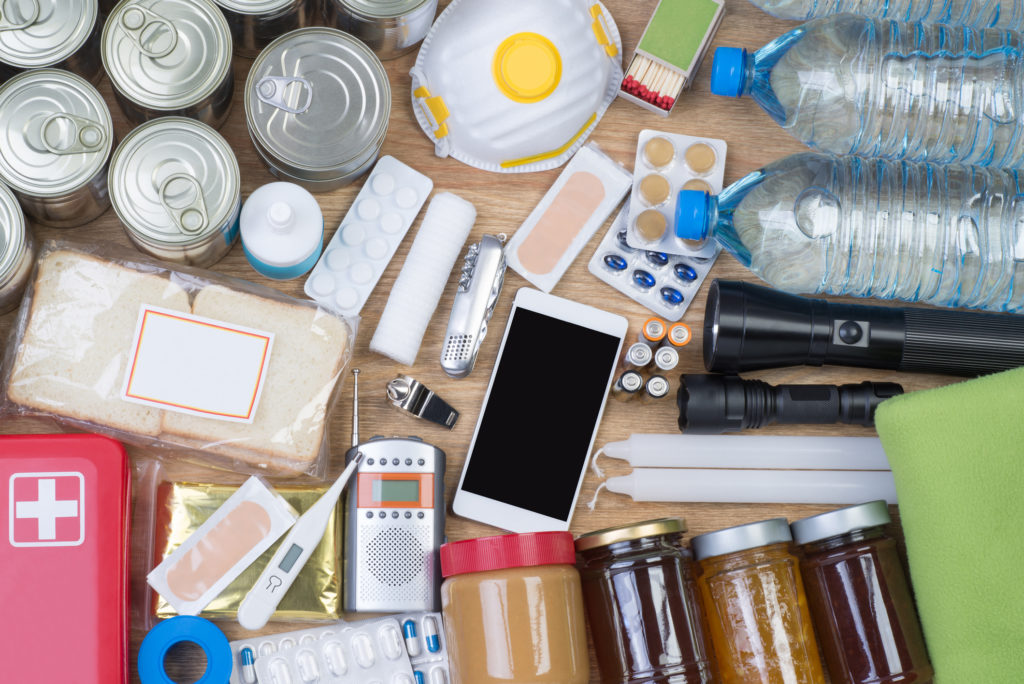Our usual day to day lives don’t typically (or at least we hope not) involve an emergency. Thinking about emergency preparedness may fall to the back of our minds, until it is needed – which far too often, is too little too late. There are many things one considers when tragedy may strike but being able to act fast and respond needs preparation. Have you considered how and what to be prepared with in the event of the unthinkable? Have you thought of what to do in the case of a home emergency? What about if you are stuck on the side of the road, and help is a day away?
Emergencies can take time. It may take workers “days” in some cases to be able to get to you. As such, provisions should be made for at least 72 hours to be prepared for yourself and your family. Key aspects of being prepared include knowing your risks, making a plan, and getting an emergency kit in place. (You can refer to https://www.getprepared.gc.ca/ for an overview and exhaustive review of emergency preparedness from the Government of Canada.)
Having an emergency kit with enough (and proper) resources can save lives and provide peace of mind to you and your family. At Lambton Mutual we advise a pro-active approach to safety and loss prevention. We strongly advise on the preparation of an emergency preparedness kit for your home and your vehicle.
To help get the ball rolling with what an emergency preparedness kit will need, here is a basic outline for you to get started with.
Basic Emergency Kit (from https://www.getprepared.gc.ca/)
- Water – at least two litres of water per person per day; include small bottles that can be carried easily in case of an evacuation order
- Food that won’t spoil, such as canned food, energy bars and dried foods (replace food and water once a year)
- Manual can-opener
- Crank or battery-powered flashlight (and extra batteries). Replace batteries once a year.
- Crank, battery-powered radio (and extra batteries) or Weather radio
- First aid kit
- Extra keys to your car and house
- Some cash in smaller bills, such as $10 bills and change for payphones
- A copy of your emergency plan and contact information
- If applicable, other items such as prescription medication, infant formula, equipment for people with disabilities, or food, water and medication for your pets or service animal (personalised according to your needs)
Basic Vehicle Kit (from https://www.getprepared.gc.ca/)
- Blanket
- Candle in a deep can and matches
- Extra clothing and shoes
- First aid kit with seatbelt cutter
- Flashlight (crank or battery-powered). Replace batteries once a year.
- Food that won’t spoil (such as energy bars)
- List of contact numbers
- Radio (crank or battery-powered). Replace batteries once a year.
- Small shovel, scraper and snowbrush
- Warning light or road flares
- Water
- Whistle
It is also good to note that if you are having any issues with assembling a kit yourself there are other options available for purchasing a completed kit. The Canadian Red Cross and Salvation Army both offer different types of home and auto emergency preparedness kits.
Although we hope you never have to face an emergency, we hope this article has provided some relevant items to consider when devising an emergency preparedness kit for your home and your vehicle(s). Lambton Mutual is committed to help our policy holders be pro-active and always take measures to be prepared and safe when it comes to loss prevention.
Our Advantage:
We will be there to return your lives to normal after a loss.
